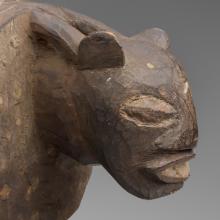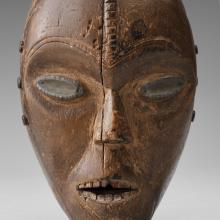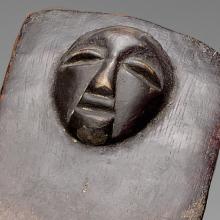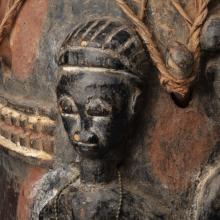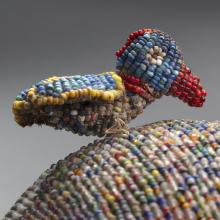The Art of the African Instrument
The Art of the African Instrument
Africa’s rich cultural heritage encompasses a tremendous range of music, musical instruments, and performing arts. Music is enjoyed recreationally, and permeates celebrations, festivals, processions, masquerades, ceremonies, rituals, royal occasions, and community events. The variety of instruments made and used in Africa ranges from drums, xylophones, and zithers, to electric guitars and keyboards. Many traditional musical instruments appear utilitarian, while others are embellished with geometric, anthropomorphic, and zoomorphic features, allowing them to simultaneously serve as works of art.
Carved human or animal forms, heads, or faces in high or low relief animate instruments. For instance, the shell of a drum may display carved human forms, while a sculptural figure adorns the handle of a bell or the top of a harp lute. Many forms have symbolic or spiritual significance; others are inspired entirely by their maker’s imagination. Ornate instruments that play a role in royal, religious, or ceremonial functions are commonly made by experienced, revered craftspeople. Among the Yoruba of Nigeria, for example, professional carvers craft drums.
 This exhibition features bells, rattles, harp lutes, drums, slit gongs, and lamellophones or “thumb pianos.” Commonly made from gourds filled with seeds or small stones, handheld rattles produce sound when shaken. Drums carved from solid logs of wood in a variety of shapes and sizes may be single-headed, open at one end and closed at the other, or double-headed and struck by hand or with drumsticks. Sonorous slit drums or slit gongs are also carved from wood and played by striking near the edge of the slit with a stick or mallet. Though small in scale, the lamellophone produces enchanting sounds. Plucked with the thumbs, it consists of a set of wooden or metal keys arranged on a soundboard. The strings of the melodious harp lute run from the neck to the wooden soundbox at an angle.
This exhibition features bells, rattles, harp lutes, drums, slit gongs, and lamellophones or “thumb pianos.” Commonly made from gourds filled with seeds or small stones, handheld rattles produce sound when shaken. Drums carved from solid logs of wood in a variety of shapes and sizes may be single-headed, open at one end and closed at the other, or double-headed and struck by hand or with drumsticks. Sonorous slit drums or slit gongs are also carved from wood and played by striking near the edge of the slit with a stick or mallet. Though small in scale, the lamellophone produces enchanting sounds. Plucked with the thumbs, it consists of a set of wooden or metal keys arranged on a soundboard. The strings of the melodious harp lute run from the neck to the wooden soundbox at an angle.
Musicians play instruments singularly, in pairs, or in larger ensembles and frequently incorporate vocals. Many African languages are tonal—a word’s meaning depends upon the tone or pitch in which it is communicated. As a result, a number of instruments, such as drums and xylophones, mimic speech through their tone and rhythm. The musical instruments on view are from the Fowler Museum at UCLA from the West and Central African countries of Liberia, Republic of Côte d’Ivoire, Nigeria, Cameroon, Gabon, and Democratic Republic of the Congo.
Special thank you to the Fowler Museum at UCLA for making this exhibition possible.
[inset image]
Yoruba batá drummer 1951
Photograph by William Bascom (1912–81)
Oyo State, Nigeria
© Phoebe A. Hearst Museum of Anthropology
and the Regents of the University of California
15-31827, R2024.0204.001
@SFOMuseum
#ArtoftheAfricanInstrument
© 2024 by San Francisco Airport Commission. All rights reserved.
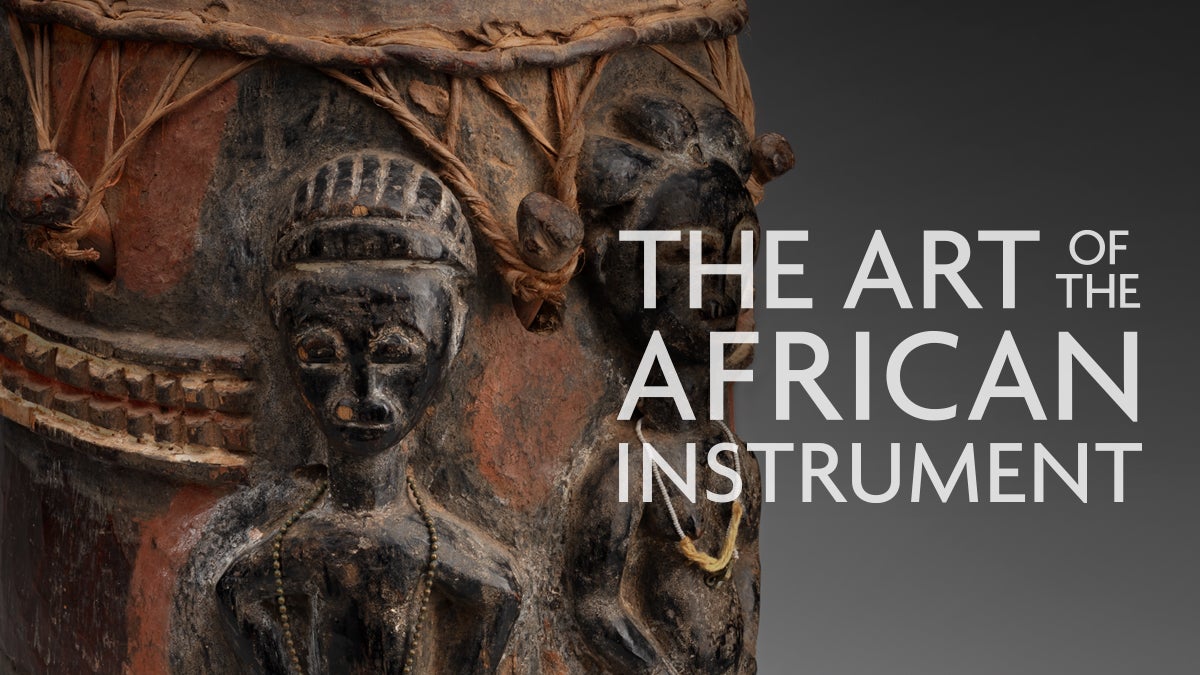
![[left] Harp lute (ngombi) Ngounie River region, Gabon Tsogo peoples wood, hide, fiber, metal Fowler Museum at UCLA; Gift of Helen and Dr. Robert Kuhn X85.457 L2024.0201.001 [right] Harp lute Gabon Ndjabi peoples wood, hide, pigment Fowler Museum at UCLA; Gift of Helen and Dr. Robert Kuhn X86.1922 L2024.0201.015](/sites/default/files/styles/medium/public/1_african_instruments.jpg?itok=WLby6UgO)
